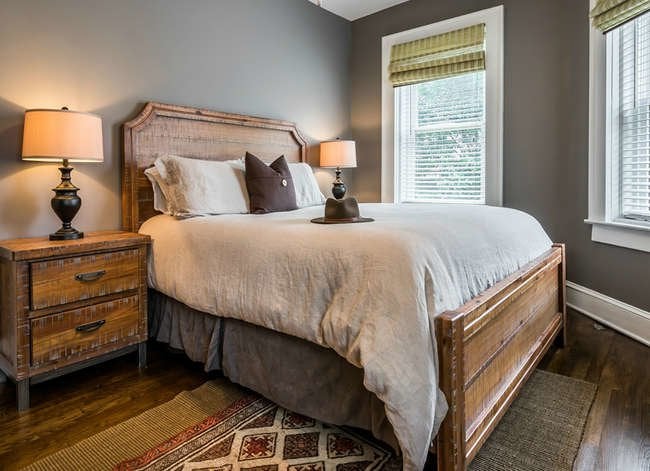We may earn revenue from the products available on this page and participate in affiliate programs. Learn More ›
Define the Mood of the Room

Zillow Digs home in Atlanta, GA
If you want your living room to feel restful, consider soft blues and grays. On the other hand, if you’d like your kitchen to feel vibrant and bright, look into yellows and reds. Whatever the case, by first pinpointing the ambiance you’d like to achieve, you can more quickly narrow your color palette and decide which hue should anchor the room.
Take Your Color Cue from Small Details

Take into consideration your decor before picking out paint. Your couch, a rug, a painting you can’t wait to hang—all of this matters when it comes to choosing a paint color that suits the rest of the room. Before you head to the hardware store to browse paint chips, scan the room for little details that you’d like to highlight and enhance by bringing in a complementary hue.
Related: The New Neutrals: 9 Colors You Can Trust for Today’s Home
Hold Off if Your Home Isn't Furnished Yet

Zillow Digs home in Atlanta, GA
Paint color should actually be the last decision you make for a room. You don’t want to be stuck with an unpleasant color for your bedding set just because you decided to make a bold statement with your paint picks.
Related: 21 Ways to Make a Small Bedroom Big
Don't Forget to Factor in Lighting

Before finalizing your paint color, be sure you first see what they look like in all different types of light. Most hardware stores have light boxes available so you can test the color without lifting a paintbrush. Using a light box, test your favorite paint chips in natural daylight (that will show it’s truest tone) before investing in a gallon or more.
Always Do a Color Test

You don’t have to paint the entire wall to visualize the final results. Start by painting a small corner of the room, then let it dry and give it a second coat. If you love the look, proceed. If not, it’s back to the drawing board.
Put Up a Poster Board

If you’re concerned about messing up the current state of your living room by covering a corner of the wall with a series of different hues, there’s another tactic. Cover white poster boards with the colors you’re considering, then tack them up to the wall and stand back. It’ll still give you a sense of the color without leaving a permanent mark.
Make Sure the Color Complements Furniture and Flooring

Zillow Digs home in New Orleans, LA
When testing a paint color, there’s more to consider than what it looks like against a white wall. You should see what it looks like as a backdrop for your artwork, your favorite chair, even your wood flooring.
Related: 12 Calming Colors for a Serene Home
Go with the Flow

Zillow Digs home in Jacksonville, FL
In most homes, you can see a part of the color on your living room wall from the dining room or kitchen—whatever room is right beside it. That’s why it’s important to consider whether or not the new color you’re introducing complements—or clashes with—the palette running through the rest of your home.
Customize Your Color

If you’re still at a loss for which color to choose, remember that most stores that sell paint will help you mix together a custom color to match a swatch of fabric or a print (like custom drapes or an artistic focal point with the accent color you’d like to bring out).

A DIYer’s Guide to Replacing Flooring
Update the look and feel of any room by replacing old, worn-out flooring. These products and straightforward steps make it easy enough for any handy homeowner to do.
